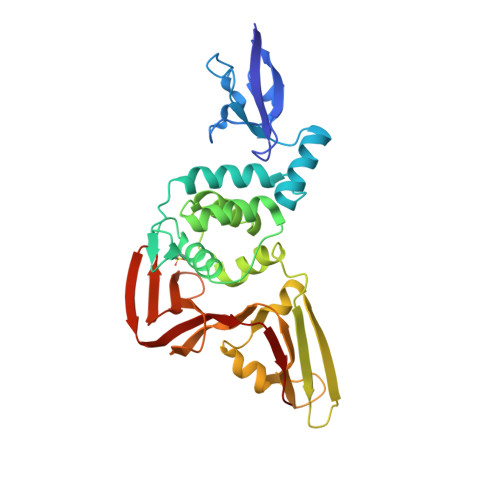X-ray Structural and Biological Evaluation of a Series of Potent and Highly Selective Inhibitors of Human Coronavirus Papain-like Proteases.
Baez-Santos, Y.M., Barraza, S.J., Wilson, M.W., Agius, M.P., Mielech, A.M., Davis, N.M., Baker, S.C., Larsen, S.D., Mesecar, A.D.(2014) J Med Chem 57: 2393-2412
- PubMed: 24568342
- DOI: https://doi.org/10.1021/jm401712t
- Primary Citation of Related Structures:
4OVZ, 4OW0 - PubMed Abstract:
Structure-guided design was used to generate a series of noncovalent inhibitors with nanomolar potency against the papain-like protease (PLpro) from the SARS coronavirus (CoV). A number of inhibitors exhibit antiviral activity against SARS-CoV infected Vero E6 cells and broadened specificity toward the homologous PLP2 enzyme from the human coronavirus NL63. Selectivity and cytotoxicity studies established a more than 100-fold preference for the coronaviral enzyme over homologous human deubiquitinating enzymes (DUBs), and no significant cytotoxicity in Vero E6 and HEK293 cell lines is observed. X-ray structural analyses of inhibitor-bound crystal structures revealed subtle differences between binding modes of the initial benzodioxolane lead (15g) and the most potent analogues 3k and 3j, featuring a monofluoro substitution at para and meta positions of the benzyl ring, respectively. Finally, the less lipophilic bis(amide) 3e and methoxypyridine 5c exhibit significantly improved metabolic stability and are viable candidates for advancing to in vivo studies.
Organizational Affiliation:
Department of Biological Sciences, Purdue University , 915 W. State Street, West Lafayette, Indiana 47907, United States.



















